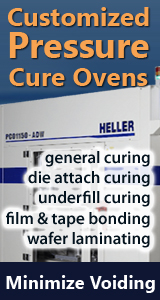Dave
Frankly, I think you may be barking up the wrong tree.
Like DaveF, I suggest that the process would be horrendously expensive with masking and so on.
The $64,000 question is whether what you propose will serve any useful purpose. I venture to suggest that it won't. When a plastic IC is moulded, the leads are wetted by the plastic. These leads (I'm assuming a J-, gull-wing or SOIC package or similar, but analogue arguments may be applied to others) are usually tinned copper or alloy. When they are soldered, considerable heat is conducted upwards to where they enter the package. Assuming the tinning doesn't melt (it could happen if your IR oven is badly adjusted), there will be a differential expansion which may be sufficient to break down the weak metal-to-plastic bond, leaving a crack of sub-micron, almost molecular, thickness, which would be the subsequent purported ingress path of contaminants (I personally have doubts whether this is common, although sporadic reports have been published). I have customers who have been soldering plastic packages with amine-hydrochloride water-soluble fluxes for donkey's years, often with less-than-adequate cleaning, their products being used in all climates, without experiencing any problems of this nature. However, it COULD happen.
Another point is that parylene is itself a polymer and it is effective only if the substrate to which it is applied is clean. Most components are more heavily contaminated on delivery than the assembled boards, having often been hot-tinned with a chloride-containing water-soluble flux and very perfunctorily cleaned (see "Cleaning and Contamination of Electronics Components and Assemblies"). This presupposes you will have to clean the components before parylene-coating. The differential expansion between the lead/parylene/package will not guarantee that you are hermetically sealing the part.
I agree with you that parylene is a coating par excellence, provided that it is well applied on a perfectly clean assembly. IMHO, one of its main positive features is that it must be applied in vacuo: this means that almost all volatile residues are removed before the stuff is evaporated onto the assembly and this includes some types of flux activator which may have escaped cleaning (although not chloride ions, of course).
My advice, therefore, is not to parylene-coat the individual parts. I suggest you may care to solder them in normally and clean off the flux residues with an adequate method, according to the flux/paste type, not forgetting that essential final spray rinse in the purest, non-recirculated, DI water you can lay your hands on, a thorough drying by clean air-knifing followed by evaporative drying at 105�C and then parylene-coating the assembly. This will give you a better reliability than what you are suggesting with a subsequent polyurethane coating at a far lower cost (I suggest that the cost of coating each component would be nearly equal to that of the whole assembly). Any chloride ions which have entered the crack prior to coating would have little chance of migrating to the die.
BTW, did you know that you can have ions from the gold plating trapped in ceramic packages as well? 10,000% reliability is a pipe dream. The best that can be done is to strive for 99.9999%!
Good luck
Brian
reply »
![]()
![]() Has anyone out there tried to parylene coat plastic parts ...
- Aug 04, 1999
by
Has anyone out there tried to parylene coat plastic parts ...
- Aug 04, 1999
by
![]()
![]() | Has anyone out there tried to parylene coat plastic part...
- Aug 04, 1999
by
davef
| Has anyone out there tried to parylene coat plastic part...
- Aug 04, 1999
by
davef
![]()
![]()
![]() | | Has anyone out there tried to parylene coat plastic pa...
- Aug 04, 1999
by
| | Has anyone out there tried to parylene coat plastic pa...
- Aug 04, 1999
by
![]()
![]() | | | Has anyone out there tried to parylene coat plastic ...
- Aug 05, 1999
by
| | | Has anyone out there tried to parylene coat plastic ...
- Aug 05, 1999
by
![]()
![]() | | | | Has anyone out there tried to parylene coat plasti...
- Aug 05, 1999
by
| | | | Has anyone out there tried to parylene coat plasti...
- Aug 05, 1999
by
![]()
![]() | | | | | Has anyone out there tried to parylene coat plas...
- Aug 06, 1999
by
| | | | | Has anyone out there tried to parylene coat plas...
- Aug 06, 1999
by
![]()
![]() Dave
Frankly, I think you may be barking up the wrong t...
- Aug 08, 1999
by
Dave
Frankly, I think you may be barking up the wrong t...
- Aug 08, 1999
by






